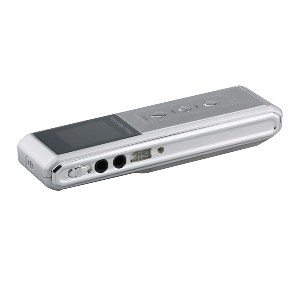
Guidelines for preparing for the qualitative interview
We recently launched a qualitative interview skills course in National University of Ireland, Galway (NUIG) and it was delivered by Dr. Toni Owens, PhD.
The course came about as a result of the success of our “Nvivo ready formatted” transcription service. During the course of this work, we get to hear a lot of interviews being conducted and, by extension, see the patterns in terms of classic mistakes being repeatedly made by qualitative interviewers.
We took a series of real qualitative interviews which some of our clients and research participants very generously made available to us for educational purposes. We coded the audio files (see tutorial for coding audio) against the classic errors that people made and we played the files to the group having embedded the sound bites in a PowerPoint presentation which Dr. Owens used to illustrate each type of error and link it to the philosophical underpinnings and general qualitative data collection guidelines.
Here is a list of the classic errors (in no particular order) which we are happy to share with you:
- Talking over participant
- Interrupting participant (not allowing participant time to finish talking before asking the next question)
- Finishing sentences for participant (putting words in their mouths)
- Asking more than one question at a time (very often, you will only get a response to the last one the participant heard)
- Asking narrow questions (framing the question too narrowly)
- Asking leading questions
- Filling up silences (not giving the participant time to think or expand) which is very common amongst less experienced (and also some very experienced) qualitative interviewers
- Not following the topic guide (not to be confused with not allowing emergent topics) or being consistent across and between interviews in relation to key topics from the topic guide which should have been drawn from the research question itself
- Not allowing interesting and emergent topics to be developed because of a rush to get to the next question or prompt
- Not being courteous enough
- Not having due cognisance where a power relationship exists between the interviewer and participant.
- Arguing with the participant (yes we are serious and have an excellent example in the workshop)
- Being judgemental (we have a wonderful example in the workshop)
- Not signalling when the end of the interview is approaching allowing the participant to say anything they may have on their mind
- Fumbling with equipment and being unfamiliar with the equipment being used
- Failing to record the interview altogether
- Recording in a noisy and distracting environment (only limited control available to the researcher on this one but cognisance is important nevertheless where choices do exist)
As a researcher, you are expected to develop many skills for which you may have been given limited if any training. You will not get all of the above right in a live interview but being aware of the all too often repeated mistakes of others should go a long way in helping to reduce the possibility of having poorly collected data to try and analyse.
Your data is the raw materials from which you will build your study. If your data is flawed, it directly impacts on the quality of your analysis which, in turn, has massive implications for the credibility of your findings. If your findings are questionable, then there is little point to your discussion chapter. For example, how can you use a quote which came as a direct response to a leading question and represent this quote as a true account of your participant’s attitudes and beliefs? Poorly collected data goes to the integrity of your data which in turn impacts on your credibility as a researcher. In addition, it takes about seven hours to transcribe one hour of audio. A typical PhD study would have about thirty one hour interviews. That represents thirty working days (six weeks full time work) to transcribe a typical qualitative data set. That is a lot of wasted time if you are transcribing comments about the weather or quotes you can’t use.
To avoid falling into the kind of traps we have just been speaking about, here are few tips which, if you follow, we promise will raise the quality of your collected data:
1. Give careful thought to your research question and from it, develop a clear topic guide
2. Conduct at least two genuine pilot interviews (we say genuine because we see a lot of transcripts labelled as “pilot” followed by the “real” interviews which are just as bad)
3. Transcribe these interviews yourself regardless of whether you plan to outsource your transcription work OR code from the audio
4. Code the interviews through at least two cycles of coding
We promise you, if you do this, you will significantly raise the quality of your interviews because having spent two days painfully transcribing comments about the weather along with all the other mistakes you may have made, followed by an attempt to code and analyse the results of the mistakes, there is absolute certainty that your awareness will be raised to the point that there will be measurable improvements in two key drivers of success in achieving the collection of rich data to underpin your study. These two drivers of success are:
- Your data collection instrument in the field (topic guide)
- Your interview techniques in the filed
You can use NVivo to validate your data collection instrument if you are formatting your transcripts (see auto-coding tutorial http://www.nvivotraining.eu/autocoding).
If you are interested in organising this interview skills training workshop in your learning institution you can send an e-mail to info@qdatraining.eu and we will respond with a quote within one working day.
Kind regards,
The qdatraining.eu Team

